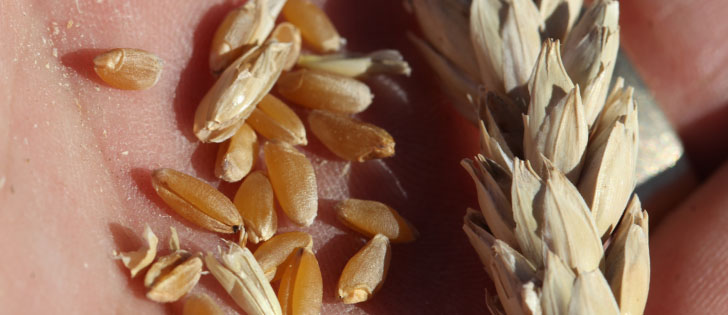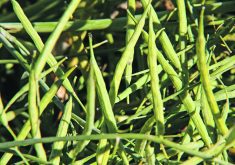SWIFT CURRENT, Sask. – Crop disease control should not be viewed the same way as weed control, says BASF technical development specialist Russell Trischuk.
Disease can’t be managed through a visual assessment, he told growers at the recent Cropportunities workshop in Swift Current.
“It’s already there,” he said.
Most cereal and pulse diseases are polycyclic, such as rust or ascochyta, and decisions to spray are made as needed.
Fungicide applied at the two-to six-leaf stage doesn’t prevent future occurrences but can improve crop vigour. However, fungicides provide only 14 days worth of control, so the crop has to be watched for future infection.
Read Also

Research looks to control flea beetles with RNAi
A Vancouver agri-tech company wants to give canola growers another weapon in the never-ending battle against flea beetles.
A disease like fusarium, however, is monocyclic and occurs once per year. Decisions to spray have to be made before the disease happens.
“If you see it, it’s too late,” Trischuk said.
Fusarium is expected to be a problem this year, and the control window is small. The heads are most affected at 50 percent flowering, he said. There is a three-to-five day window to spray.
It’s too late to act once an orange/ pink colour appears on the heads.
Not all fungicides are created equal
Trischuk said fungicides can be either systemic or contact.
Systemic fungicides move into the plant while contact fungicides stay on the surface and prevent spores from germinating.
There are also four classifications of fungicides:
• preventive products must be on the plant before a disease hits, and must be reapplied;
• curative products are used after infection;
• eradicative fungicides are used after symptoms appear, but they cost $2,000 per acre and are used mainly in the horticulture industry;
• antisporulant fungicides prevent germination but are not widely used and are not that effective.
Trischuk said application timing is critical. Ideally, farmers should apply fungicides before symptoms develop.
“If the environment continues to kick you around, you might want to consider a second application.”
Coverage is also key. Fungicide should be applied before the rows close up so the entire plant is sprayed.
Trischuk reminded producers to use at least 10 gallons of water per acre when spraying from the ground and at least five gallons when spraying by air to maximize coverage.
“Adjust the water volume for dense canopies,” he said.
“You might have to go to 20 (gallons).”
Adding the extra water can be worth $1,000 to $2,000 in crop, he added. Herbicide nozzles are not good enough for fungicides.
He recommended the backward and forward facing Turbo Tee Jet. His second choice is the Flood Jet.
Canola rotations
Growing disease-resistant canola varieties in short rotation is just asking for that variety to become susceptible to the disease, said Clint Jurke, an agronomist with the Canola Council of Canada.
This has become a problem in northern Saskatchewan, he said, and is eliminating one of the tools producers have to combat diseases in canola.
Blackleg increased in 2010, particularly in the north, along with some hot spots in the southeast.
“We are not recommending tight rotations to anyone,” Jurke said.
Blackleg was the second biggest production problem for canola growers in the 1980s, behind only weed control.
Breeders responded with resistance genes, he said, but then producers started making bad decisions. More races of blackleg have since been discovered.
Jurke said breeders don’t want to make the mistake that was made in France, where a resistance gene put into all varieties in 1993 failed completely by 1999.
Jurke said the problems in those regions were compounded by the 200-day growing seasons compared to 100 days in Canada. Still, the pathogen can be aggressive.
“Long rotation is still required.” Growers should seed different varieties to ensure resistance genes are also rotated, he added.
Sclerotina control
Sclerotinia is the main profit stealer faced by canola growers, and the wet conditions that are expected again this year provide the right environment for it to flourish.
Jurke said growers should plant resistant varieties, but crop rotation doesn’t control the disease as well as rotating fungicides.
“Fungicide is still your single best control strategy.”
However, he said losing fungicides is a concern.
Benlate has already lost its efficacy after sclerotinia developed resistance.

















